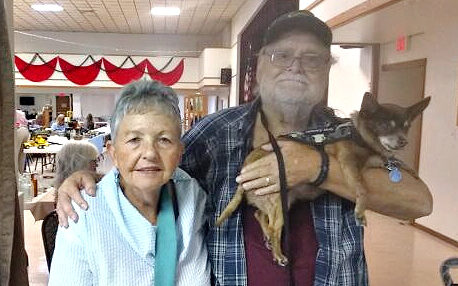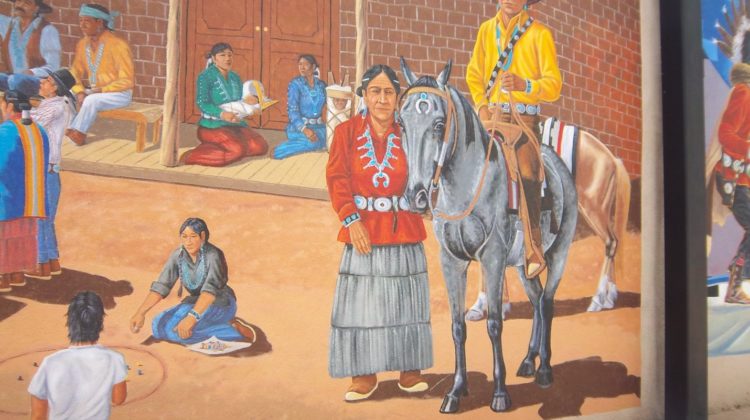
Portion of a Mural, Grand Junction, Colorado[1]
Better Times than These?
We tip our hat to Winston Groom for this profound question. And to Forrest Gump. In a number of our Posts, such as Repeating Torpedo Marbles, we have taken a long look back at the way we were in America about 100 years ago. To do this we used the Library of Congress digital newspaper search.
You can search American newspapers online from 1770 to 1963. You can also use the American Newspaper Directory to learn about newspapers published between 1690 to present day. Chronicling America is sponsored jointly by the National Endowment for the Humanities and the Library of Congress.
When we learn something unusual or even extraordinary there, like explosive marbles, we post it for you. We have learned that over time playing marbles and marble games have served a number of important social purposes.
Playing Marbles was a Social Glue
If not better times than these, things were certainly extraordinarily different in America only 100 years ago. We have read stories in the digitized newspapers which use marbles to lay out a morality play. In many Christian communities all across the country, playing marbles for keeps was taboo. There was, at best, a shaky truce as long as the kids didn’t play marbles at all on Sunday!
Another clip tells a story about how a boy wanted to buy some marbles but found none for sale at the mercantile store. The story goes on to teach a lesson in consumer economics based on the glitch in the supply chain which denied the boy his marbles!
Warp & Woof
Historically marbles, marble games, and marble stories, like those Grandpa told, have served as the warp and woof of the cultural fabric. The warp are those threads which stretch across time and woof are the threads which run across American culture.

Consider this: We have found marbles from over 200 different communities all across America. Our finds include a tiny clay marble from the 1850s with a delicate Cherokee rose hand painted on it along an old dirt road which leads to a ghost town. War, cholera, Yellow fever, and economic depression swept over the land, but this tiny marble remains.
We know that marbles are found near abandoned asylums, hospitals, schools, movie theatres, and downtown warehouses and businesses where kids waited while parents both shopped and sold.
Marbles have historically been played across every economic socio-status. If a kid had a marble or two and he was ready to play then “game on” regardless of the child’s social status. Yes, children did work hard, but they always found some time for play.
We found glass marbles in the stream which runs through a long closed but once gigantic textile mill in Georgia, as just one example.
We even found marbles at the little country church in the dell even though kids were forbidden to play on Sunday! And cemeteries. We know where there is a gravestone of a little boy decorated with marbles. And dirt and sand lanes leading to the graveyard seemed to have attracted players over the years.
Tell It Like it Ain’t!
Marbles and marble play were once ubiquitous in American society.
Equally important, were the marble stories. And there were some whoppers out there! Stories were told and retold. Sometimes the actor was Grandpa himself, but he often changed the names to protect the guilty.
We borrow this phase from recording artist Jimmy Buffett’s song from Beach House on the Moon (1999). Grandpa told a whole bunch of semi-true stories about marbles and marble play. Validity never mattered. It was the telling and hearing that mattered.
A Wise Pup
We keep finding stories and comic pages in the old newspapers which are a snapshot in time. These are fun, interesting, and often very nostalgic. And they are just the kind of story that Grandpa heard on the courthouse steps while whittling or in the barber shop and which he just couldn’t wait to get home and tell the young’uns. And some, of course, were about his own marble adventures as a boy.
An example of a comic strip from 100 years ago is “A Wise Pup”. This comic strip is from The Day Book, Chicago, in
1914.[2] Edward Willis Scripps published The Day Book as an experiment in advertisement-free newspaper publishing. It was planned and published for the “working-class readership” Monday through Saturday from September 28, 1911 to July 6, 1917. The paper cost a penny an issue in 1914.
Friendly Enemies or Did I ever tell you about Billy’s Teeth?
Grandpa would settle down in his cane rocker and start “Child, did I ever tell you about…?” In this case it was poor Billy and his teeth.
“When I looked out of the window, Johnny, I was glad to see you playing marbles with Billy Simpkins.
We wasn’t playing marbles. We’d just had a fight, and I was helping him pick up his teeth.” Tit-Bits Magazine[3]

This next story is from The Minneapolis Journal in 1905[4]. It is a bit long, but it is chock full of small details of life on the American frontier.
The Marble Thief
“I shall never forget my first marbles, writes Louis Albert Banks[5]. They were not so cheap and plenty as they are now, when I was a little boy, away over on the frontier in Oregon. They were none of your big glass sort, but the plain, little, old fashioned striped ones with now and then a ‘black alley’; but I thought they were the prettiest things in the world.
I was a little fellow about six or seven years of age. My father shot a weasel one day, and tanned the weasel skin, leaving the fur on one side; so I kept my marbles in a weasel-skin bag which I was very proud of. That is, I kept them in that when I carried them around to show off to the boys. But often at night I would roll them about until the last thing before I went to bed, and then leave them wherever they happened to be.
Now, we had just moved into our first house built of lumber, and finished up in in the ordinary way of frontier country houses, ceiling inside and weather boarding outside[6].
Well, to return to my marbles. One morning one of them was gone, and I could not find it anywhere. The next morning two more were gone, and the thing kept up until they were nearly all gone. Father and mother both became interested in the matter. Who in the world could be stealing my marbles? We lived away out in the country, and there were just my father and mother, my little sisters and myself, and yet the marbles slipped away until all but two or three, which I put in the weasel-skin bag and stuck under my pillow every night, had disappeared.
While we were still wondering over it, I looked up one evening, and saw on the inside, up under the eaves, where a place had been left unfinished in ceiling of the house, a strange creature peering out. He seem to have whiskers like a man. I shrank up to my father’s side, and hoarsely whispered ‘What’s that?’
He looked at it a minute, and said, ‘Why, that is a wood rat’.
He had made his nest down in that hole between the ceiling and the weather boarding….He was a very big wood rat, and he had the greatest variety of things stored away in his home, and all my lost marbles among them….” The Morning Star
Reverend Banks’ Father killed the rat and fixed the hole. Better times than these? Maybe, but maybe not. At least now we collectors don’t have to worry about four-legged rats stealing our marbles!
Where’s the Weasel Bag?
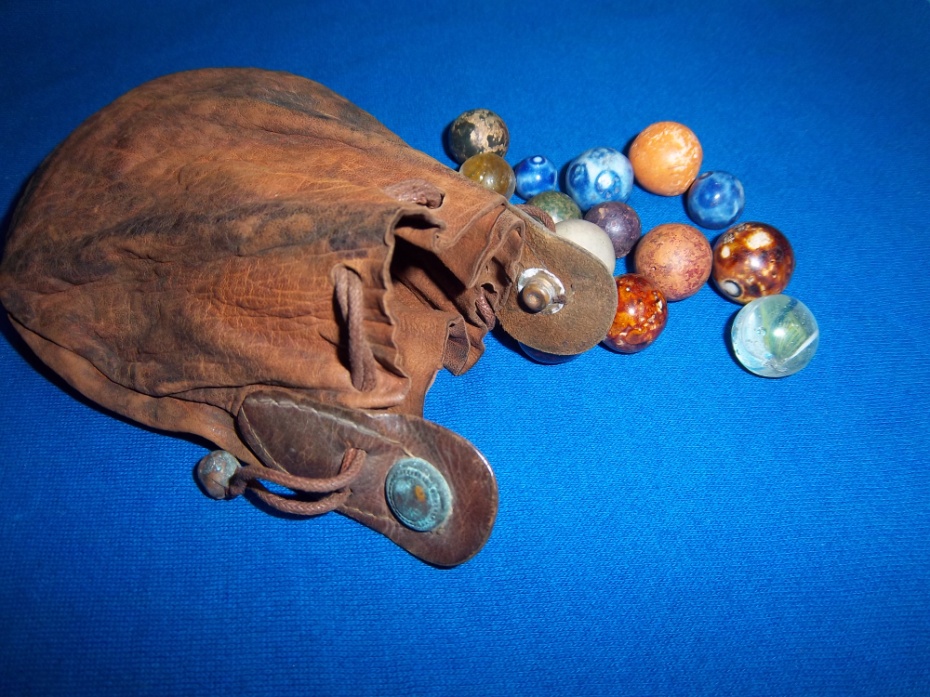
We would love to have that 1860s weasel-skin marble bag! Wonder if he put the marbles against the fur or if he left the fur on the outside?
A Man of Distinction: or Who’s Irving?
Grandpa was wonderful at speaking other peoples voices—even Grandma’s! And his sound effects could have you jumping out of your hide! This short story is the kind Grandpa would have used different voices to tell.
It is from the New-York Tribune, May 16, 1897. We have no idea who Irving was unless this is a nod to Sir John Henry Irving (6 February 1838 – 13 October 1905) who was a famous British actor and manager.
“Yes sir,” repeated a man much given to talking. “I played with Irving for several years.”
“Why,” said his friend, “I didn’t know you were ever on the stage.”
“I wasn’t,” rejoined the gossip. “I played marbles with him when we were boys at school.” —Golden Penny[7]
Boy Finds Gold in Cellar[8]
This last story is one of Grandpa’s favorites because there are all sorts of ways to tell it. It has great vocalization possibilities, and, best of all for Grandpa, there is an opportunity to slip in a moral precept or two.
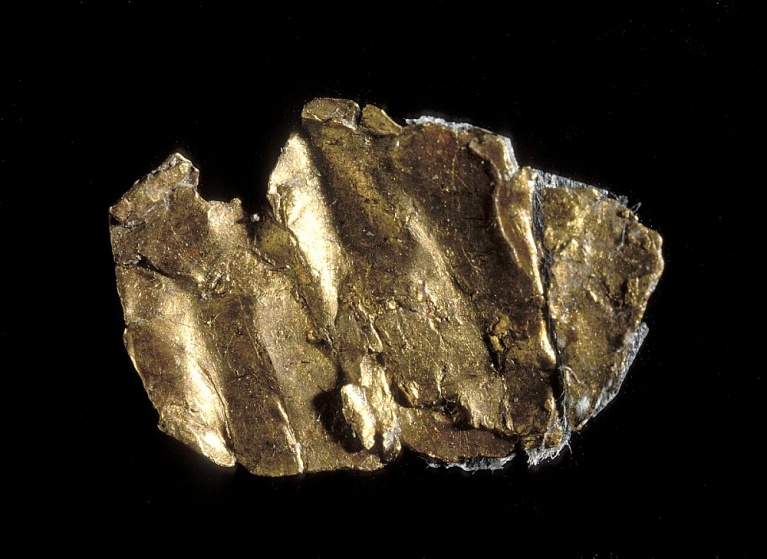
“A woman excitedly entered Bremen street police station at Cincinnati the other day, and, turning over $230 in gold to Sergt. Jueggling, informed him that her little boy, George Kramer, had found it in a cellar in Wade street, near Plum [Street].
The boy and two companions, Alfonso Churerch and Ruby Herz, were in the rear of No. 213 Wade street Sunday afternoon, and Kramer, espying a lot of gold pieces, suggested playing marbles using the gold as chips. They played and Kramer won all the money.
When he took it to his mother she nearly had hysterics. She is poor, and at first, she says, thought of keeping the money, but later concluded to give it to the police.”
Wow! And, by the way, $230.00 in 1900 would be worth about $8,306.00 today!
The Way We Were
In this post we emphasize just how important Grandpas are and always have been in the life of their children and grandchildren. And we return to a theme which runs through not only our book The Secret Life of Marbles Their History and Mystery but through our posts in this e-zine as well. Marbles have played a critically important role in American children’s material culture since Colonial times.
While children worked hard, they also played with marbles, tops, balls, and barrel hoops. And often, even into the early 20th century, children’s’ toys were homemade. Children often made their own marbles out of unbaked clay. And yes, they did “melt” if left out in the rain.
Historically, stories have been the framework of America’s blended culture. Stories were told around the campfire, in front of the fire in the home, and on the porch in the cool night breeze.
And no one told them better than Grandpa. Sure, you may have heard about Billy’s teeth many times before, but Grandpa could make every single time seem like the first time.
Yep, things are so different today. We think first about today’s social media, cell phones, smartphones, mobile phones, laptops, and so on.
People were not nearly as healthy in 1903 as in 2023. Life expectancy was much shorter for men, women and children…including babies.
But there were good times. Belly laughs. Grandpa’s stories. And marbles.
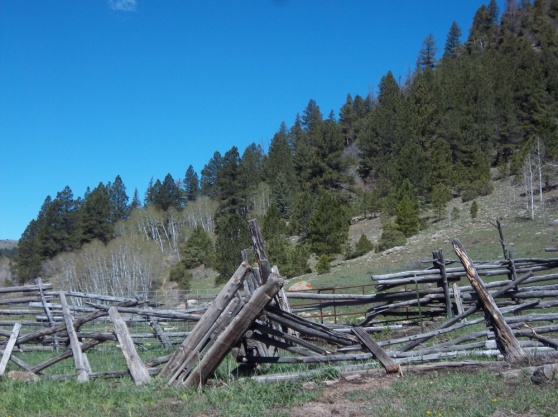
- The murals in Grand Junction are fantastic! We studied them every time we drove downtown. You can check out the program at https://www.gjcity.org/191/Mural-Programs ↑
- The day book. [volume], November 04, 1914, LAST EDITION, Image 24
About The day book. [volume] (Chicago, Ill.) 1911-1917. The day book. [volume] (Chicago, Ill.), 04 Nov. 1914. Chronicling America: Historic American Newspapers. Lib. of Congress. <https://chroniclingamerica.loc.gov/lccn/sn83045487/1914-11-04/ed-1/seq-24/> The strip is a bit of an enigma. While signed MacDonald, Sara W. Duke, Curator, Popular & Applied Graphic Art, , Prints & Photographs Division, Library of Congress wrote us that “I can’t tell you who drew the strip. It could be anyone.” Ms. Duke sent a thumbnail sketch of MacDonald, and she also said that while the feature ran in 1914-1915 & does not appear to have been picked up by other newspapers: ↑ - Coulee City dispatch. [volume], March 10, 1938, Image 7
About Coulee City dispatch. [volume] (Coulee City, Wash.) 19??-19??↑ - The Minneapolis journal. [volume], February 04, 1905, The Journal Junior, Page 8, Image 34
About The Minneapolis journal. [volume] (Minneapolis, Minn.) 1888-1939↑ - Reverend Banks was a pastor, evangelist, and prolific author. He was born in Corvallis, Oregon, in 1855 and he died in 1933. To see the remarkable list of books which he wrote: https://onlinebooks.library.upenn.edu/webbin/book/lookupname?key=Banks%2C%20Louis%20Albert%2C%201855%2D1933 4/16/2023 ↑
- If you want to learn more the American frontier then check: “Western frontier life in America” @ https://faculty.chass.ncsu.edu/slatta/cowboys/essays/front_life2.htm 4/18/2023 ↑
- New-York tribune. [volume], May 16, 1897, Page 7, Image 39
About New-York tribune. [volume] (New York [N.Y.]) 1866-1924↑ - New Ulm review., July 04, 1900, Image 7
About New Ulm review. (New Ulm, Brown County, Minn.) 1892-1961. Photograph: National Museum of American History, “Gold Nugget” at https://americanhistory.si.edu/collections/search/object/nmah_741894 5/23/2023↑


